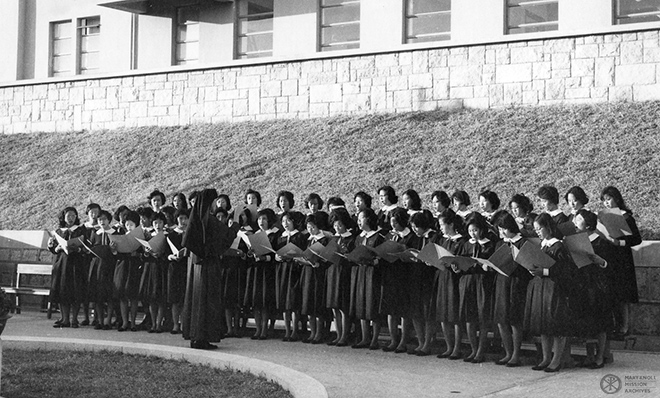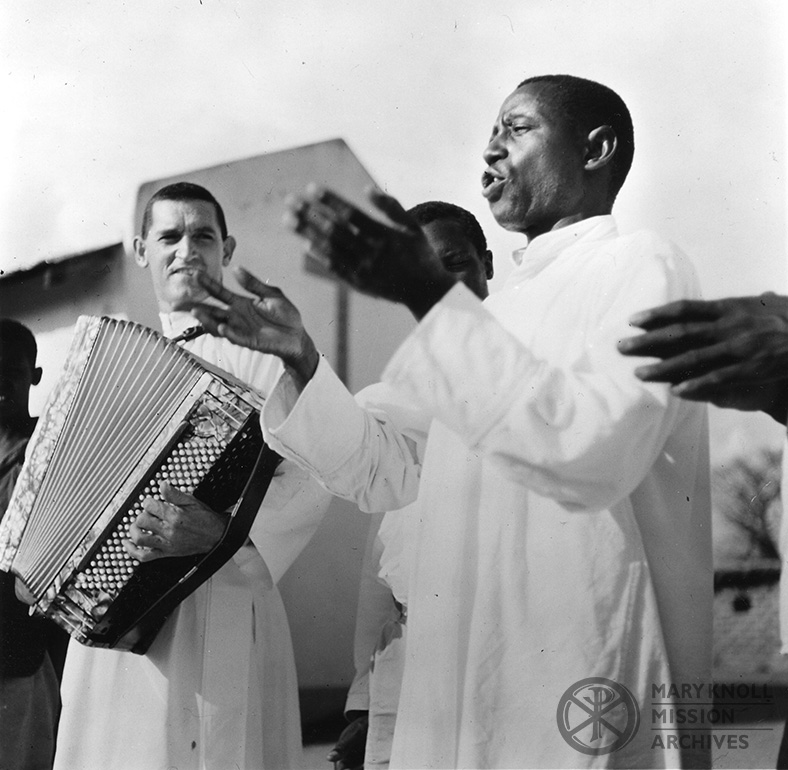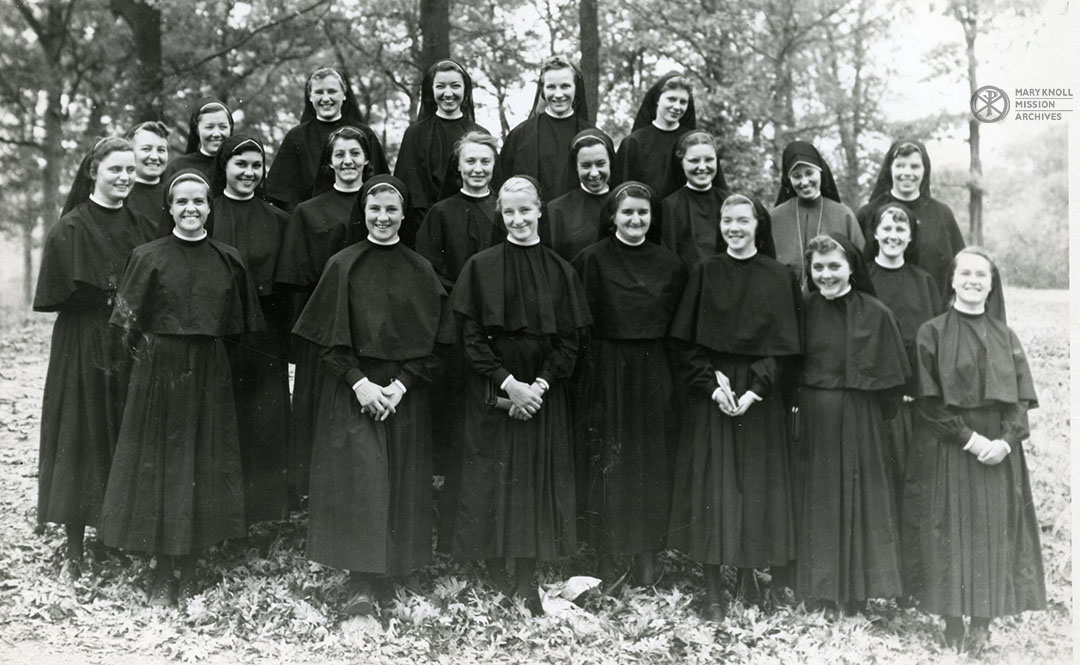In their missions, Maryknollers perform music as a way to share the Gospel and to connect with people of different backgrounds. Even if they don’t yet speak the local language, music helps to bridge the gap and make a connection with their new community. Performances go both ways. Whether a Maryknoller is performing for their community or the community is sharing its musical traditions, these performances allow Maryknollers and their communities to create a musical experience together in a language understood throughout the world.
“Let’s Talk About God”, a Maryknoll Sisters’ TV Special
The Maryknoll Seminary Christmas Program, 1960
“Father Orlando slipped up on his engagements for the Church and found himself with 500 Maryknoll Convent School girls arriving for a choir rehearsal at the same time as a young couple were arriving to be married. ‘Let nothing disturb thee’ being Father’s motto, he got out the microphone so the girls could hear the wedding ceremony and the girls got their rehearsal by singing the nuptual Mass. Not everyone has a 500 voice choir to sing at their wedding!”
Maryknoll Convent School Diary, Hong Kong, September 5, 1957
“Music filled the air during the midsummer vacation, beginning in December, when students and teachers rested their weary hands and heads, and relaxed with home visits, games and songs. One of our teachers is good on the guitar, another plays the accordion, and they can all beat drums. Marimbas, flutes and harmonicas are also common. Not so common, but more interesting, is the ‘dono’, a sort of one-string fiddle resembling an archer’s bow with a big calabash attached to develop volume and resonance. As the player plucks at the string he obtains an added effect by whacking the calabash against his belly at rhythmic intervals.”
Divine Instrument
Choosing carefully from among
Several worthy candidates
See how the Master Crafter’s hand
Skillfully balances a wooden reed
Feeling for faults and imperfections
Eying first one side, then the other
Before hollowing out a tube
And repeatedly puncturing holes
To make a flute.
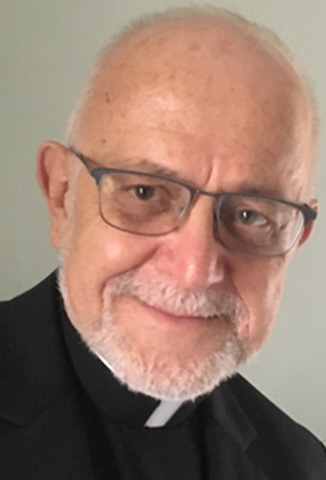
Fr. Joseph Veneroso was ordained in 1978 and served in Korea as a teacher and pastor until 1984. He has served as a writer and editor of Maryknoll Magazine since then.
Surely the reed does not appreciate
Being so chosen, cruelly cut and hollowed out
Vainly protesting its suffering and sacrifice
Until that magic moment when
Lifted by gentler hands and held
To gifted lips, the very breath of life
Rushes in to fill and overflow with
Sublime melody.
And so at times it seems with us
When unseen forces strip away
Our dreams, our hopes, our plans
Our deepest selves
And we wonder why and what
It’s all about when even
Prayer itself rings hollow.
But then, ah then, the Spirit
Rushes in to fill our void
Transform our pain
Restore our life
And both music and musician
Dissolve, combine, unite
In God.
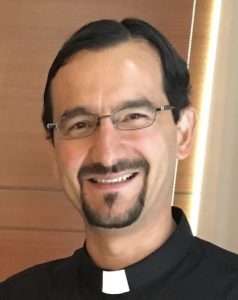
Fr. Rodrigo Ulloa-Chavarry has served in Cambodia, Nepal, Taiwan, and China. He brings music into his ministry with the flute, guitar, and drum, playing at liturgies, retreats, and special gatherings.
"We Come to the Feast"
Sr. Barbara Masterson with her congregation in Cochabamba, Bolivia
Fr. Donald Sybertz with his congregation in Shinyanga, Tanzania
Mozart's Sonata No. 1 in E
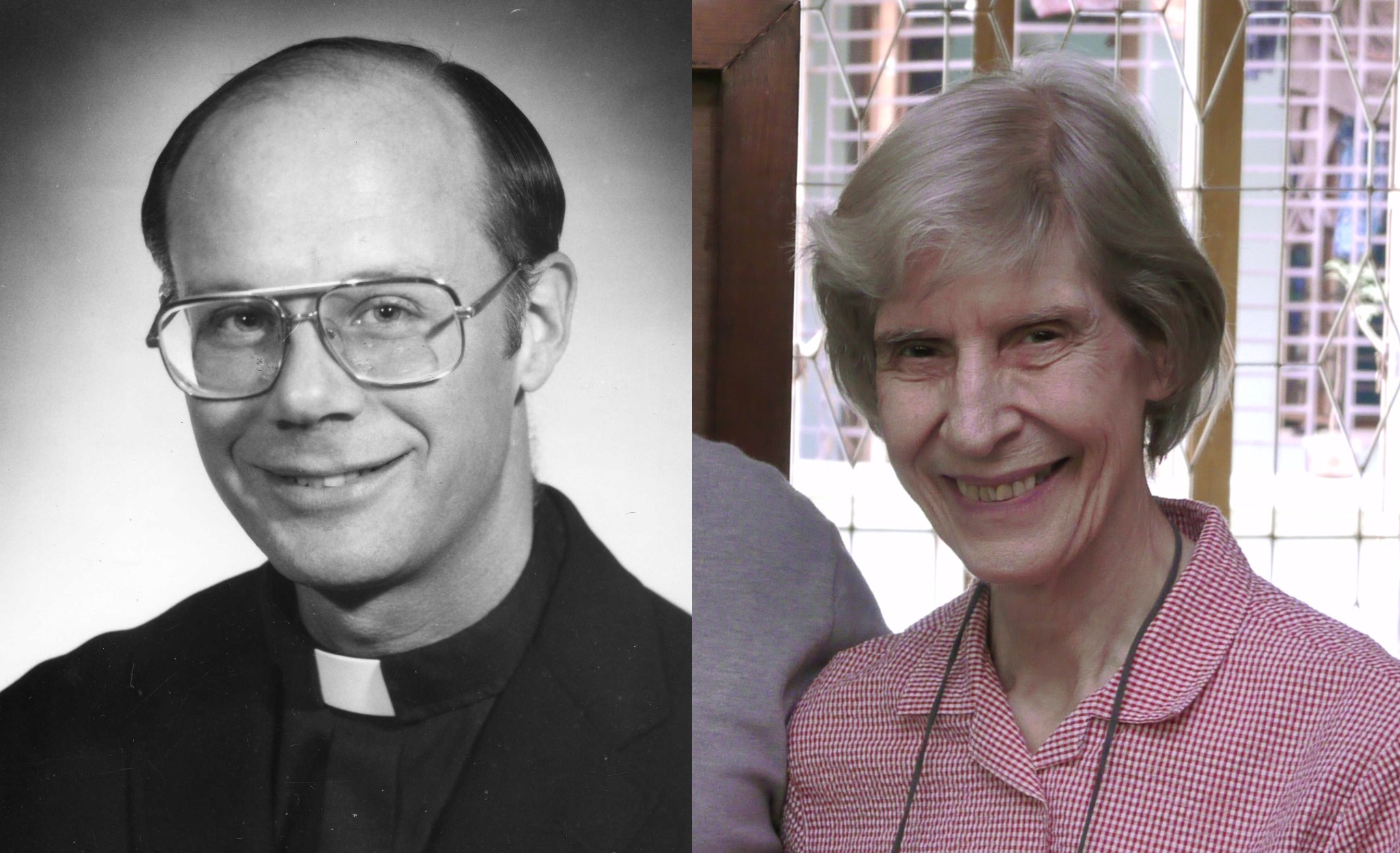
Fr. James Kofski, a violinist, has served in the US, the Middle East, Thailand, and Myanmar.
Sr. Miriam Francis Perlewitz, a pianist, has served in Hong Kong, the Philippines, the US, and Bangladesh.
“Music for our guests this afternoon. Ever since we learned ‘I Hear America Singing’ we look forward to chances to perform and today was such. Besides this all-time favorite the novices sang selections new and old; among the new, Bach’s ‘Jesu Joy of Man’s Desiring’. We hoped the piano-harp concerto which closed the program would prompt a violin performance, but Sister Kathleen said she left her fiddle home.”

